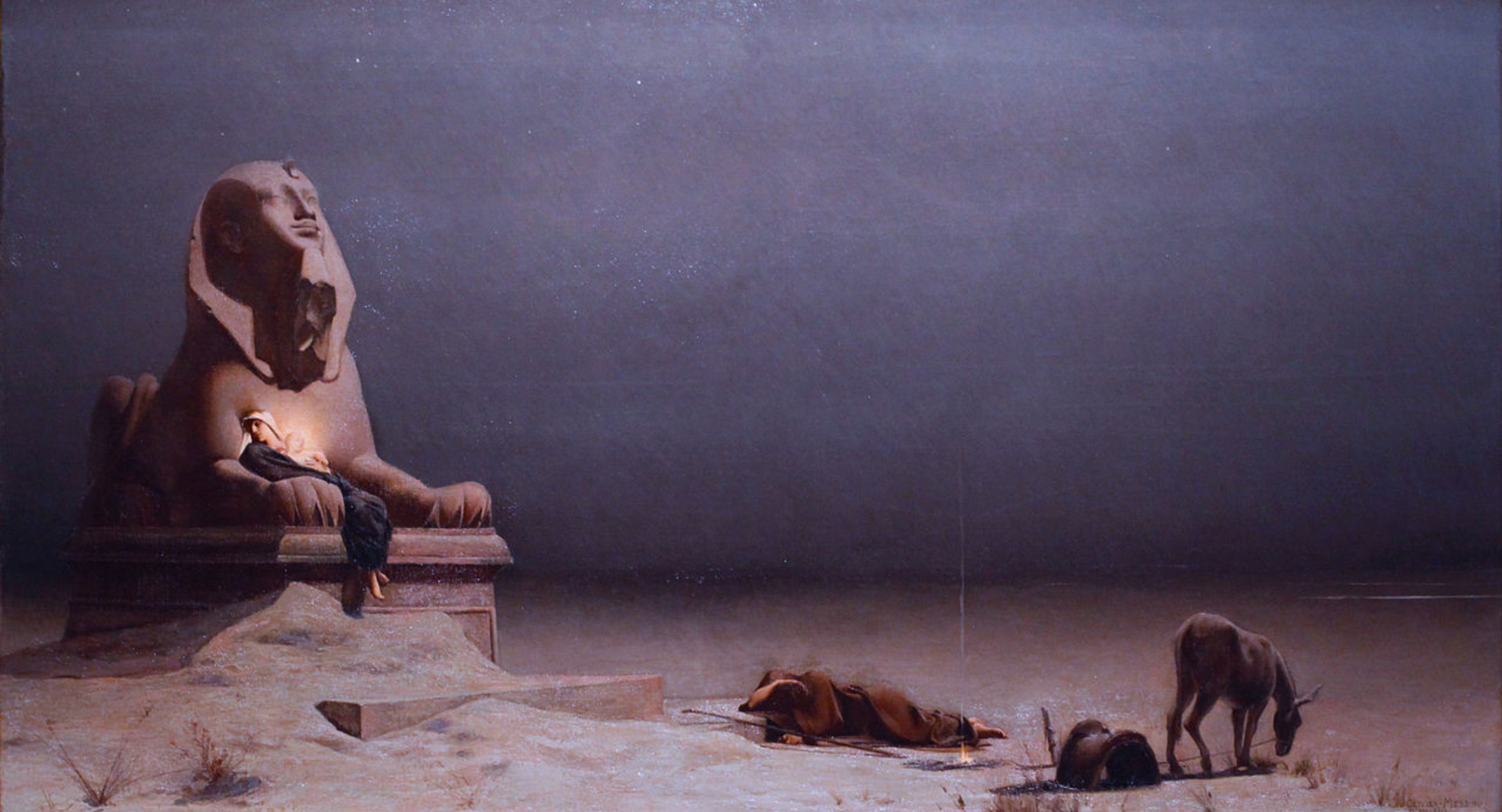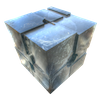
According to Matthew in the New Testament, when the Magi came in search of Jesus, they went to Herod the Great in Jerusalem to ask where to find the new-born "King of the Jews". Herod became paranoid that the child would threaten his throne and sought to kill him in what is known as the Massacre of the Innocents. But an angel appeared to Joseph in a dream and warned him to take Jesus and Mary into Egypt
As fatigue and hunger overtook the Holy Family, they rested on their journey and settled for the night. Here we see Luc Olivier Merson’s rendition of the Rest on the Flight into Egypt, a popular subject in Christian art. In an austere desert scene, Joseph sleeps on the sand under a vast sky scattered with faint stars. At his feet, a thin ribbon of smoke rises from a weak, smouldering fire. Nearby, his donkey grazes on the few sparse shoots. On the left, Mary reclines with her baby between the arms of a sphinx statue dominating a third of the canvas. The child Jesus is covered with light, the brightest spot in the painting. The sphinx has its nose intact, and wears a pharaonic beard, unlike the Great Sphinx of Giza. Its head is tilted up toward the sky, and its expression looks peaceful and reassuring, in contrast to the barren landscape in the painting
Earlier works on the same subject by masters such as Correggio (c. 1520), Caravaggio (c. 1597), Anthony van Dyck (1630), etc. often portray the story in an idyllic scene with trees and flowers and angels. Merson’s version, however, offers a heightened realism that accentuates the hardship and deprivation suffered by a family in exile
